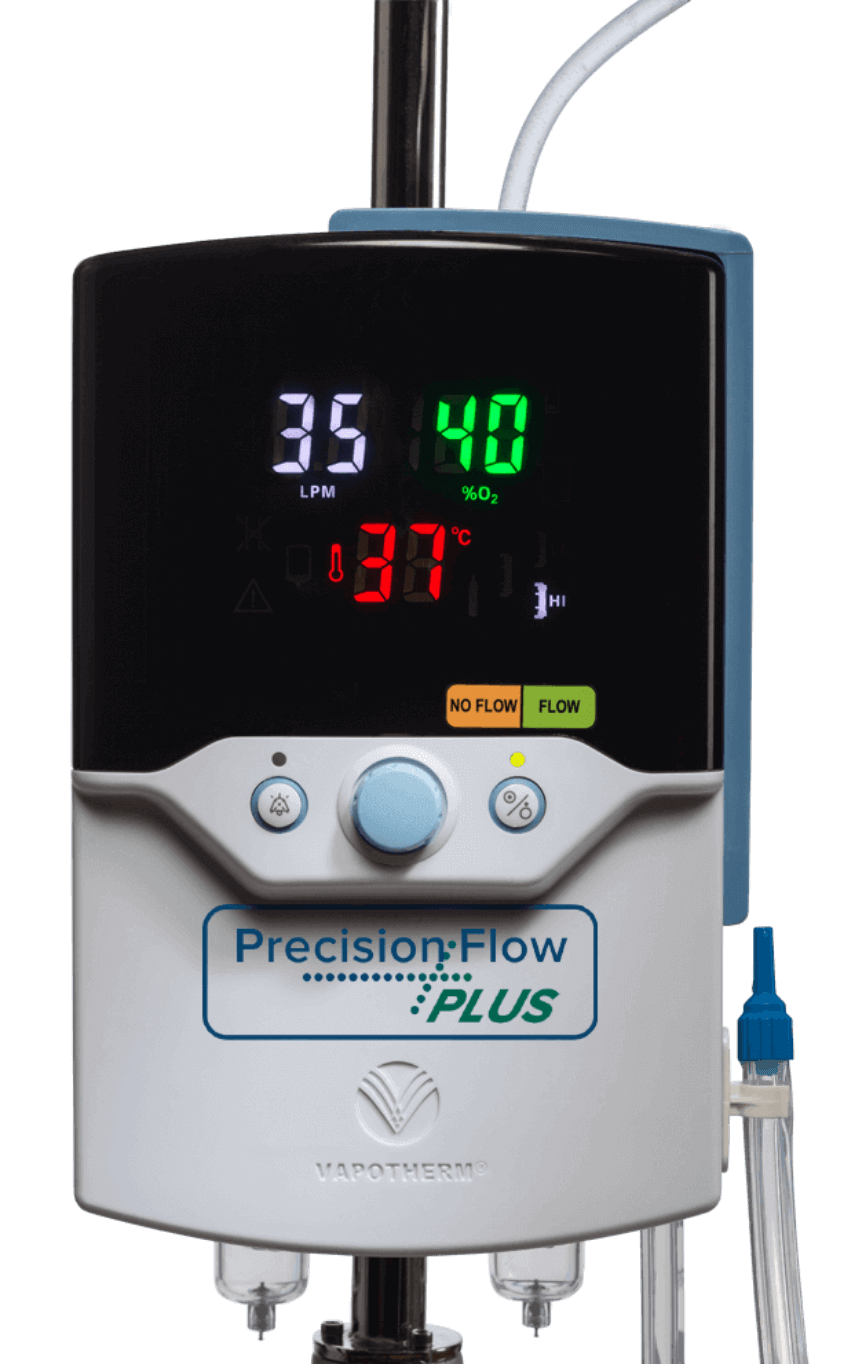A community hospital level II nursery reduces transports by over 80%
35 → 3
Average Transports Out/Year
After Vapotherm
Care Area: 10-Bed Level II Nursery
Setting: Community Hospital
Location: Greater Phoenix Metro
Deliveries per Year: 1,700 (approx.)

Before Vapotherm
This community hospital supports approximately 1,700 live births per year.
The center had a policy guideline that infants requiring pressure support beyond initial recruitment breaths were considered for transport to a Level III NICU.
Dr. Michael McQueen, the NICU Medical Director at this hospital, believed that NICU transports out can result in lower family satisfaction, increased patient risk during transport, and unfavorable economics.
Clinical Use Of Vapotherm In A Level II Nursery
The development of clinical guidelines is helpful when implementing a new technology or therapy. This center staffs 24/7 neonatal nurse practitioners (NNPs), which provided a strong clinical infrastructure to support the implementation of Vapotherm. The physicians provided extensive education to the staff about proper sizing of the cannula interface and clinical best practices.

Clinical Policies at This Site Include:
Cannula Size: Less than 50% occlusion of nares
Flow Rates: 2-8 L/min
Typical Starting Flow Rate: 4-6 L/min
Indication(s): Patients with symptoms associated with mild to moderate respiratory distress syndrome (RDS)
Surfactant Usage: Deliver surfactant via INSURE in case of increased FiO2 > 0.35 – 0.40 to maintain target SpO2

Results after Vapotherm
Vapotherm was implemented in September 2010. The hospital purchased 3 Precision Flow units in 2010 and currently owns 5 units dedicated to the 10-bed Level II NICU. The team utilized Precision Flow to manage symptoms associated with mild to moderate infant respiratory distress syndrome. Dr. McQueen reported the nursing staff indicated an increase in professional satisfaction.
In the four years before implementing Vapotherm, the hospital transported an average of 35 babies per year. In 2011, the first full year of using Vapotherm Hi-VNI Technology, the hospital transported 3 babies out to a tertiary center. The result is greater than an 80% reduction in transports, allowing moms, families, and babies to stay together in their community after birth.
A Word from the NICU Medical Director, Dr. Mike McQueen

